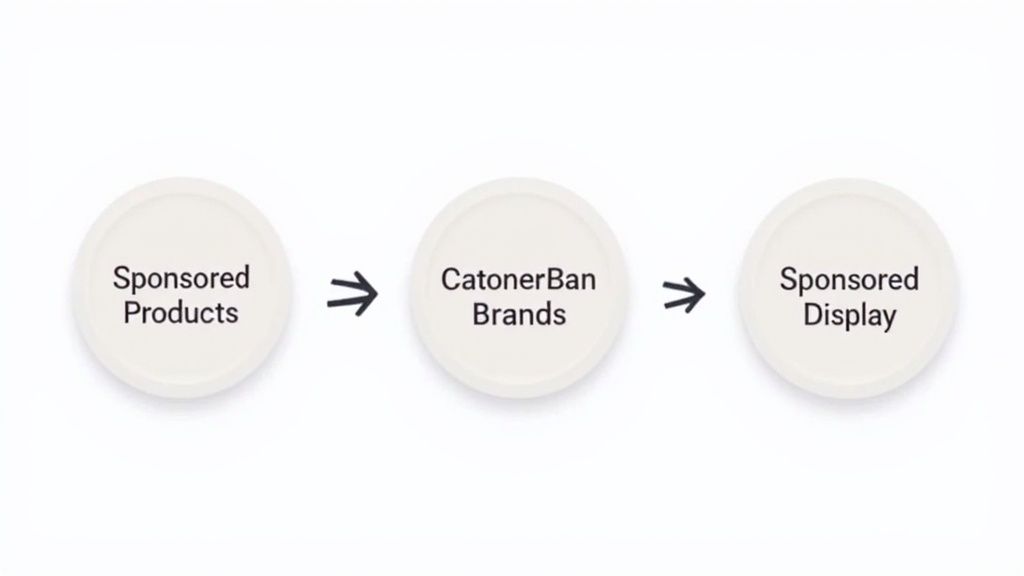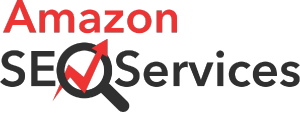Introduction to Amazon PPC

In the competitive Amazon marketplace, listing your products isn’t enough to guarantee visibility or sales. This is where Amazon Pay-Per-Click (PPC) advertising becomes a valuable tool. Amazon PPC allows sellers to promote their products to shoppers searching for specific keywords. This targeted approach ensures your products are seen by potential customers who are already interested in what you offer. Instead of passively hoping customers stumble upon your listings, you can proactively place your products directly in their path when they’re ready to buy. This shift from passive to proactive marketing can significantly impact your visibility and sales.
Why Amazon PPC is Essential for Sellers
Amazon PPC advertising is essential for sellers for several reasons. First, it dramatically improves product visibility. With millions of products competing for attention, organic reach can be challenging, particularly for new sellers. Amazon PPC helps your products stand out in search results, increasing the chances of attracting potential buyers. For instance, if you search for “running shoes” on Amazon, the top results are frequently sponsored products. This prominent placement gives sellers a significant advantage in capturing the attention of shoppers. Moreover, PPC advertising can indirectly boost organic rankings. Increased sales generated through PPC can positively influence your organic search ranking, creating a mutually beneficial cycle. This synergy between paid and organic visibility contributes to long-term growth and success.
The Power of Targeted Advertising
One of the greatest strengths of Amazon PPC is its precise targeting capability. You can refine your campaigns to connect with specific customer segments based on their search terms, purchase history, and other relevant information. This precise targeting ensures efficient use of your advertising budget by focusing on customers most likely to purchase. This targeted approach is similar to a fisherman casting their net precisely where the fish are, instead of randomly across a vast lake. By focusing on relevant keywords, you connect with customers actively looking for products like yours. Furthermore, Amazon provides detailed performance metrics, allowing you to monitor your campaigns’ effectiveness and make data-driven adjustments. This iterative optimization process is critical for long-term success and return on investment with Amazon PPC. Now, let’s explore the different types of Amazon PPC campaigns available to sellers.
Types of Amazon PPC Campaigns

Understanding the different Amazon PPC campaign types is essential for maximizing your advertising effectiveness. Each type serves a distinct purpose, catering to specific advertising objectives. This allows sellers to customize their strategies for optimal results. Choosing the right campaign type is like selecting the proper tool for a specific task. Just as a hammer is for nails and a screwdriver is for screws, each Amazon PPC campaign type offers unique functionalities and advantages. Selecting the wrong tool, or campaign type, can lead to wasted effort and resources. This understanding empowers sellers to make informed decisions about their advertising strategy.
Sponsored Products
Sponsored Products are the most common type of Amazon PPC campaign and the foundation for many sellers’ advertising efforts. These ads appear directly within search results and on product detail pages, blending seamlessly with organic listings. They are triggered by keywords, appearing when a customer searches for a term related to your product. For example, if you sell a coffee grinder, your Sponsored Products ad might appear when someone searches for “burr grinder,” “electric coffee grinder,” or “coffee beans.” This direct link to customer searches makes Sponsored Products ads highly effective for driving targeted traffic to your product listings, connecting you with actively searching customers. This direct connection increases the likelihood of conversions.
Sponsored Brands
Sponsored Brands (formerly Headline Search Ads) offer a more prominent placement at the top of search results, above the organic listings. These ads allow sellers to feature their brand and up to three products, building brand awareness and directing shoppers to a custom landing page or storefront. For example, if a customer searches for “camping gear,” a Sponsored brand ad might display a brand logo alongside images of a tent, sleeping bag, and camping stove. Clicking the ad takes the customer directly to the brand’s Amazon storefront. This enhanced visibility makes Sponsored brand ads ideal for building brand recognition and showcasing a curated selection of products. This broadened exposure can lead to increased brand loyalty and sales.
Sponsored Display
Sponsored Display ads extend your reach beyond Amazon search results, targeting customers based on their browsing and purchasing behavior. These ads can appear on product detail pages, related product listings, and even on third-party websites and apps. As a result, these ads can remind customers of products they viewed earlier, even after they’ve left Amazon. For example, if a customer views a hiking backpack, they might later see a Sponsored Display ad for the same backpack while browsing a news website. This retargeting capability makes Sponsored Display ads excellent for reinforcing your brand message and encouraging customers to make a purchase. Additionally, Sponsored Display ads can target customers based on their interests, expanding your reach to new audiences likely to be interested in your products. These diverse Amazon PPC advertising options provide sellers with a complete toolkit to reach their target audience and achieve their business objectives. This flexibility allows for highly customized and effective advertising strategies.
Setting Up Your First Campaign
Now that you understand the different types of Amazon PPC campaigns, let’s walk through setting up your first campaign. While it might seem initially complex, by breaking it down into manageable steps, you’ll quickly grasp the process. It’s like building a house: you wouldn’t try to construct the entire structure at once. You begin with a solid foundation and build upon it systematically. This methodical approach will empower you to confidently launch your first Amazon PPC campaign.
Choosing the Right Campaign Type
The first step is selecting the right campaign type. As discussed, the three primary types are Sponsored Products, Sponsored Brands, and Sponsored Displays. Each has its advantages and considerations, so the best choice depends on your specific advertising goals. For beginners, Sponsored Products campaigns are often the easiest to manage and offer an excellent starting point. Their placement directly within search results provides high visibility, allowing you to quickly test different keywords and refine your targeting strategy. This experimentation is crucial for learning the nuances of Amazon PPC.
Defining Your Campaign Goals
Once you’ve chosen your campaign type, defining your campaign goals is crucial. Are you focused on building brand awareness, driving sales, or launching a new product? Clearly defined goals will guide your strategy and help you measure your success. For instance, if your goal is to increase sales for a specific product, you should concentrate on keywords directly relevant to that product and likely to lead to purchases. This focused approach ensures efficient use of your advertising budget and maximizes your chances of achieving your desired outcome.
Keyword Research
Effective keyword research is the bedrock of any successful Amazon PPC campaign. Identifying the right keywords ensures your ads are seen by the right audience. Utilize tools like Amazon’s suggested keywords and competitor analysis to discover relevant keywords for your products. For example, if you’re selling a yoga mat, you might target keywords like “yoga mat,” “exercise mat,” or “non-slip yoga mat.” Consider the terms your ideal customer would use when searching for your product. This customer-centric approach helps you connect with shoppers actively seeking what you offer. This connection is crucial for maximizing conversions.
Setting Your Budget and Bids
Next, you need to determine your budget and bids. Start with a budget you’re comfortable with and gradually increase it as you gain experience and observe positive results. Bidding is a critical component of Amazon PPC. Your bid influences how prominently your ad appears in search results. While higher bids can increase visibility, it’s essential to balance the bid amount with a potential return on investment. Start with lower bids and incrementally increase them based on performance data. This strategic approach helps you optimize your spending and avoid overbidding on less effective keywords.
Creating Compelling Ad Copy
Crafting compelling ad copy is vital for attracting clicks and driving conversions. Emphasize your product’s key features and benefits and incorporate strong calls to action. For instance, instead of simply stating “yoga mat,” use more descriptive language like “Extra Thick Yoga Mat for Enhanced Comfort and Support.” This type of descriptive copy provides more information and makes your product more enticing to potential customers. Remember, your ad copy is your first impression, so make it count.
Monitoring and Optimizing Your Campaign
Launching your campaign is just the first step. Continuous monitoring and optimization are crucial for maximizing your Amazon PPC success. Regularly analyze your campaign performance data, such as click-through rates, conversion rates, and ACoS. Identify what’s working well and what needs improvement, making adjustments accordingly. For example, if certain keywords generate many clicks but few sales, you might lower your bid or remove those keywords entirely. This data-driven approach allows for continuous refinement and improvement of your return on investment. Staying updated on Amazon’s best practices and algorithm updates is also vital for long-term success. The platform constantly evolves, and staying informed will keep you ahead of the curve and maximize your advertising effectiveness. By following these steps and committing to ongoing optimization, you can successfully utilize Amazon PPC to reach your target audience, boost sales, and expand your business on the platform. This consistent effort is key to thriving in the competitive Amazon landscape.
Keyword Research and Strategy

After setting up your Amazon PPC campaign, keyword research and strategy become paramount. This process is the foundation of a successful campaign, akin to laying the groundwork for a house. A solid foundation ensures stability; similarly, thorough keyword research underpins effective Amazon PPC advertising. Without a clear understanding of relevant keywords, your ads may not reach the intended audience, resulting in wasted ad spend and disappointing results. This section will guide you through researching and selecting keywords effectively for your campaigns.
Understanding Keyword Relevance
Understanding keyword relevance is the first step in keyword research. This means identifying the terms potential customers use when searching for products similar to yours. Put yourself in the customer’s shoes. What words would you type into the Amazon search bar? For example, if you’re selling a waterproof phone case, relevant keywords might include “waterproof phone case,” “water-resistant phone cover,” “protective phone pouch for water,” or “submersible phone case.” Beyond simply listing relevant keywords, consider the searcher’s intent. Are they looking for information, comparing products, or ready to buy? Understanding search intent helps you tailor your advertising strategy for maximum impact.
Using Amazon’s Keyword Research Tools
Amazon offers several tools to assist with keyword research. One helpful resource is the “Suggested Keywords” feature within the Amazon Advertising console. When setting up your campaign, Amazon suggests keywords related to your product. Brand Analytics, available to brand-registered sellers, provides valuable insights into search frequency and other important metrics. While these built-in tools provide a good starting point, consider exploring third-party keyword research tools as well. These often offer advanced features, such as competitor analysis and long-tail keyword discovery, which can significantly enhance your strategy.
Competitor Keyword Analysis
Analyzing your competitors’ keywords is another essential element of effective keyword research. By identifying the keywords your competitors are bidding on, you can gain valuable insights into their strategies and potentially uncover new opportunities. It’s like scouting your competition in a sporting match. By observing their tactics, you can identify strengths and weaknesses and adapt your approach accordingly. If a competitor successfully ranks for a particular keyword, it might be worth including that keyword in your campaigns. However, avoid blindly copying competitors; instead, use their strategies as a starting point and adapt them to your unique products and target audience.
Long-Tail Keywords and Niche Targeting
Long-tail keywords are longer, more specific phrases that target a niche audience. While they often have lower search volume, they typically have higher conversion rates because they attract customers further along in the buying process. For example, instead of targeting the broad keyword “running shoes,” you might focus on the long-tail keyword “women’s trail running shoes size 8.” This specificity increases the likelihood of clicks and conversions, especially in competitive niches where bidding on broad keywords can be expensive and less effective.
Refining Your Keyword Strategy
Keyword research is not a one-time task; it’s an ongoing process. Monitor your campaign performance and adjust your keyword strategy as needed. Analyze which keywords are driving conversions and which aren’t performing well. This continuous refinement helps you optimize your ad spending and maximize your return on investment. For instance, if a keyword generates many clicks but few sales, you might lower your bid or remove it from your campaign. Conversely, if a long-tail keyword is performing exceptionally well, consider increasing your bid to enhance its visibility and capture more sales. By regularly refining your keyword strategy based on performance data, you can ensure your campaigns are as effective as possible. This ongoing optimization is vital for remaining competitive in the dynamic Amazon marketplace and achieving your business goals.
Budget Management

Managing your budget effectively is paramount to success with Amazon PPC. Like a well-planned road trip requires a budget for gas, food, and lodging, your Amazon PPC campaigns need careful budget allocation for optimal results. This careful planning not only helps you control spending but also maximizes your return on investment. This section explores strategies for effectively managing and optimizing your Amazon PPC budget.
Setting Your Initial Budget
Establishing a starting point is crucial. Your initial budget depends on factors like your product category, profit margins, and overall marketing goals. Starting conservatively and gradually increasing your budget as you gain experience and collect data is generally recommended. This approach allows you to become familiar with the platform and avoid overspending initially. Consider your overall business goals – are you aiming for rapid growth or sustained profitability? This overall objective will influence your budget allocation and overall PPC strategy.
The Importance of ACoS
Advertising Cost of Sales (ACoS) is a crucial metric in Amazon PPC. It represents the percentage of attributed sales spent on advertising. For example, if you spend $5 on advertising and generate $20 in sales, your ACoS is 25%. Maintaining a healthy ACoS is essential for profitability. This involves finding the balance where your advertising spend generates a satisfactory return in sales. Your target ACoS will vary depending on your business objectives and product margins, but generally, a lower ACoS indicates a more efficient campaign.
Optimizing Your Bids
Your bids significantly influence how often your ads are displayed and your cost-per-click. Optimizing your bids requires continuous monitoring and adjustment. It’s like adjusting the sails of a ship to capture the optimal wind. You need to find the bid amount that maximizes visibility while minimizing costs. Bids that are too low may result in your ads not being seen, while bids that are too high can lead to overspending and reduced profitability. Regularly analyzing your campaign performance helps you identify high-performing keywords and adjust your bids accordingly.
Continuous Monitoring and Adjustment
Budget management is not a one-time setup; it necessitates continuous monitoring and adjustment based on performance data. Regularly review metrics like click-through rates, conversion rates, and ACoS. Identify which keywords and campaigns perform well and which are underperforming. This ongoing analysis allows you to fine-tune your strategy and maximize ROI. For example, a consistently high ACoS for a particular campaign might necessitate bid adjustments, target refinement, or even pausing the campaign. Conversely, high-converting keywords might warrant increased bids to capture more market share. This continuous adaptation to market conditions is crucial for sustained success with Amazon PPC. Regularly analyzing your data and making informed adjustments ensures your budget is used effectively to drive profitable growth and keeps you ahead of the competition in the dynamic Amazon marketplace.
Performance Metrics
Managing Amazon PPC campaigns effectively goes beyond simply setting them up and letting them run. Consistent monitoring and analysis of key performance metrics are crucial for optimization and maximizing your ROI. It’s similar to navigating a ship: you wouldn’t simply set a course and hope for the best. You’d constantly monitor your position, adjust your course, and navigate around obstacles to reach your destination. Likewise, tracking key metrics in Amazon PPC enables you to adapt your strategies and optimize campaigns for peak performance. This section details the essential metrics for success with Amazon PPC.
Click-Through Rate (CTR)
Click-through rate (CTR) measures the percentage of shoppers who see your ad and click on it. A higher CTR generally suggests your ad is relevant to the search query and effectively captures attention. Think of CTR as the effectiveness of a storefront display. An eye-catching display attracts more shoppers, just as a compelling ad with a high CTR drives more traffic to your listing. However, a high CTR alone doesn’t guarantee sales. It simply indicates your ad is attracting clicks. You also need to consider other metrics, like conversion rates, to evaluate your campaigns’ overall effectiveness.
Conversion Rate (CVR)
Conversion rate (CVR) measures the percentage of clicks that result in a purchase. This metric is crucial for understanding how effectively your product listing persuades customers to buy. A high CVR suggests your listing is compelling, informative, and addresses customer needs effectively. A well-optimized listing with clear images, detailed descriptions, and positive reviews is more likely to convert clicks into sales. This is comparable to a knowledgeable salesperson guiding customers through the buying process. However, even with a high CVR, you still need to consider your ACoS to ensure profitability.
Advertising Cost of Sales (ACoS)
ACoS is arguably the most critical metric for evaluating the profitability of your Amazon PPC campaigns. It represents the percentage of attributed sales spent on advertising. A lower ACoS indicates a more efficient campaign, meaning you generate more sales for each advertising dollar. For instance, a 25% ACoS means you spent $25 on advertising for every $100 in sales generated through your ads. This metric helps you understand your advertising’s cost-effectiveness and identify areas for improvement. Just as a business needs to manage expenses to stay profitable, monitoring your ACoS is essential for ensuring your campaigns contribute positively to your bottom line.
Impressions and Reach
While CTR, CVR, and ACoS are essential, don’t neglect impressions and reach. Impressions indicate how often your ads are displayed, while reach reflects the number of unique shoppers who see your ads. These metrics offer insights into your products’ visibility and the potential audience you’re reaching. A wider reach can increase brand awareness and contribute to long-term growth, even if it doesn’t immediately translate into conversions. This is akin to building a reputation – greater reach can enhance brand recognition and attract more customers over time. Monitoring impressions and reach alongside CTR, CVR, and ACoS provides a complete picture of your campaign performance and empowers you to make data-driven decisions for optimized and sustained success. Regularly reviewing and adjusting your campaigns based on these metrics will lead to a more effective and profitable Amazon PPC strategy.
Advanced Optimization Tips
While understanding the basics of Amazon PPC is essential, mastering advanced optimization techniques is what truly separates successful campaigns from the rest. Think of it like learning to drive: knowing the gas and brake pedals gets you moving, but mastering nuanced techniques like smooth gear changes and efficient cornering truly elevates your driving skills. Similarly, these advanced strategies can drastically improve your Amazon PPC performance and ROI.
Dayparting: Timing is Everything
Dayparting involves scheduling your ads to run during specific times of day, capitalizing on peak shopping periods when customers are most likely to browse and purchase. You might find, for instance, that your target audience is most active during weekday evenings or weekend afternoons. Focusing your ad spend during these high-traffic periods optimizes your budget and reach. It’s like a fisherman casting their net when the fish are feeding, maximizing their catch. Dayparting also reduces wasted ad spend by avoiding less active periods when click-through and conversion rates are typically lower.
Device Targeting: Mobile vs. Desktop
Shopping behaviors differ between devices, and device targeting allows you to tailor your ads to specific devices like mobile phones or desktops. Mobile shoppers might have different search intents and purchasing behaviors than desktop users. For example, a mobile shopper might be looking for a quick purchase, while a desktop user might be conducting more thorough product research. Customizing your bids and ad copy for each device type optimizes campaigns for greater effectiveness. This is similar to tailoring a sales pitch to different audiences: you would adjust your message for teenagers versus business executives.
Product Targeting: Laser-Focused Precision
Product targeting elevates keyword targeting by allowing you to display your ads on specific product detail pages. This is incredibly effective for reaching customers already interested in similar products. For example, if a customer is viewing a competitor’s running shoe listing, product targeting allows you to display your own running shoe ad directly on that page, capturing a highly engaged audience. This precision ensures your ads reach customers actively considering purchases within your niche. This strategy can also be used for cross-selling and upselling, showcasing complementary or premium products to interested customers.
Dynamic Bidding Strategies: Automated Optimization
Dynamic bidding utilizes Amazon’s algorithms to adjust your bids in real-time based on the likelihood of a conversion. This removes the guesswork from bid management and can greatly enhance campaign performance. Think of it like a self-driving car that adjusts speed and route according to traffic conditions. Dynamic bidding adjusts your bids based on several factors, like the customer’s search query, browsing history, and device. This automated optimization ensures you bid the right amount for each click, maximizing ROI. It also frees you to focus on other key aspects of your strategy, like keyword research and ad copy optimization.
By mastering these advanced optimization techniques and incorporating them into your overall strategy, you can take your campaigns to the next level, significantly improving performance and profitability. Remember, continuous monitoring and optimization are crucial for long-term success with Amazon PPC.
Ready to boost your Amazon sales? eStore Factory is a leading eCommerce agency specializing in Amazon PPC. With over a decade of experience and a team of Amazon experts, we can help you optimize your campaigns, increase visibility, and maximize profits. Visit eStore Factory today to learn more.
